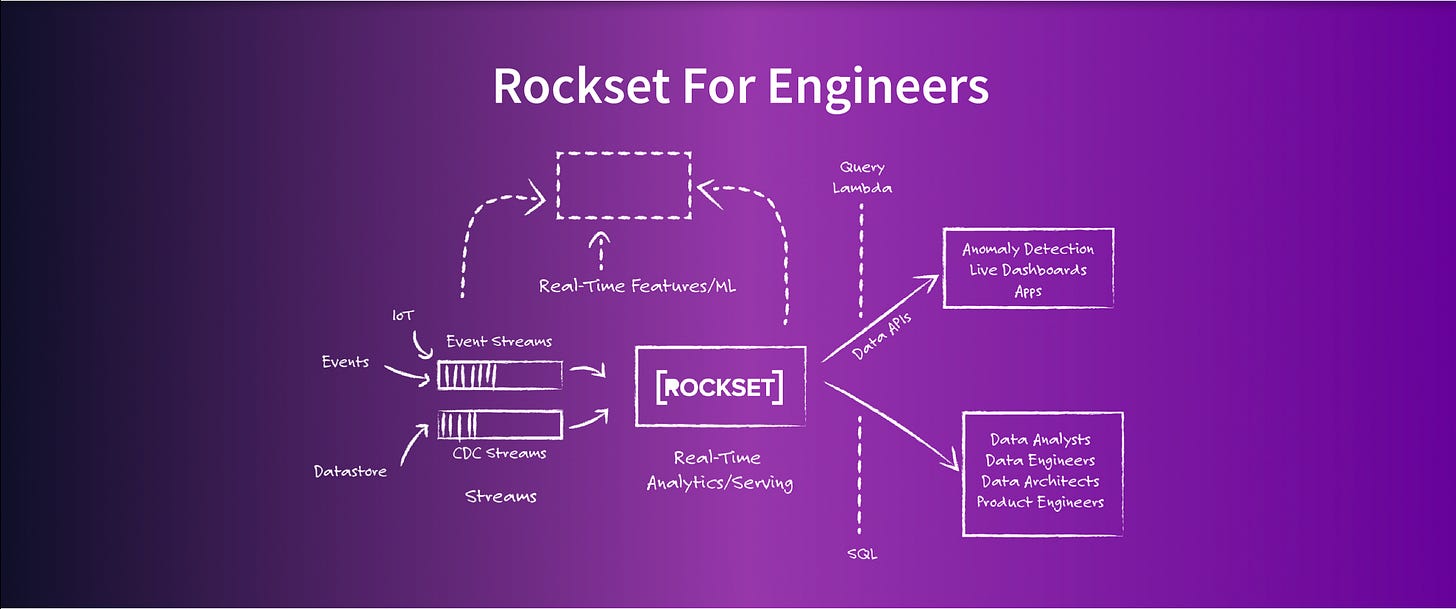For the last few years, the focus has been on data infrastructure. What tools are the right tools, and how do you set them up.
But how do you drive real value from data?
To help answer that question this week, I summarized the answers provided by Pete Fishman and Dan Silberman, co-founders of Mozart Data, from a Youtube Live I ran a few weeks ago.
We discussed both how to break into the tech field as well as how companies are driving value with data today. In particular, I enjoyed the depth of their answers around driving value with data.
It’s easy to chant the mantra “data data data” and build complex data stacks that never really deliver value. But hearing some basic practical examples of how companies can utilize data to drive results was very welcome. In the end, it was great to hear from a different set of data perspectives other than my own, so let’s dive into their answers.
How Do You See Companies Driving Value with Data?
To drive value with data, it is essential to first understand your business goals and identify the key performance indicators that will be most relevant to meeting those goals. For example, suppose one of your objectives is to increase customer satisfaction and retention. In that case, you may want to analyze patterns in customer interactions through a CRM system or look at purchase history data to identify opportunities for improving the customer experience.
Some other examples provided by Pete Fishman include answering critical questions like:
What is the value from a specific marketing channel?
What is the likelihood of churn?
And of course, what is the life time value of a customer.
Once you have identified these insights, you can then use them to make data-driven decisions throughout your organization. This might involve deploying automated processes to flag potential issues or recommend actions based on historical data trends. It might also include empowering employees with tools and training that help them make better decisions based on the analysis of real-time data.
What Creates a Successful Data Organization at a Company?
A strong culture of trust and collaboration is at the core of a successful data team. This involves empowering your team to ask and answer their questions, using tools that help them do this effectively.
To be data-driven, it is also critical to have clear metrics in place from the outset so that you can quickly get to the “truth” of your data before it is even collected. Ultimately, the success of your data organization depends on having a culture where everyone works together in pursuit of common goals and shared interests.
With this collaborative approach, teams can better interpret and analyze the enormous volumes of information at their disposal, helping them make more intelligent decisions at every stage in the business cycle. So if you want to create a successful data organization, focus on building a solid foundation of trust and collaboration among your team members. You’ll set the stage for making intelligent, data-driven decisions that will help your business succeed.
Where Will the Data Industry Be In 10 Years?
Looking at the data industry today, it is clear that big companies like Google, Amazon, and Facebook have set the standard for how data should be used and managed. However, smaller companies are starting to see the value of data as well, and are beginning to emulate what these larger organizations are doing in order to stay competitive in their own industries.
One key trend driving this shift is the growing importance of data governance and machine learning techniques. By implementing robust data governance processes, companies can ensure that their data is being used effectively and efficiently, while machine learning algorithms allow them to extract crucial insights from those datasets more easily. As a result, we can expect to see more small businesses investing in these tools over the next decade, as they look to gain a competitive edge in their markets.
At the same time, it is also important to remember that technological advances will continue to disrupt traditional data strategies. For example, new technologies like augmented and virtual reality are starting to gain traction in consumer markets, presenting exciting new opportunities for companies looking to leverage data in novel ways.
Whether you are a large or small organization, it is clear that the data industry will continue to evolve rapidly over the next decade. By investing in best-in-class data governance and machine learning solutions, businesses of all sizes can ensure that they stay ahead of the curve as this dynamic landscape continues to shift.
Data-driven Beyond The Hype
In conclusion, it is evident that data-driven decision making is essential for any business looking to create value. By understanding how data can be used to inform strategic decisions and optimize operations, businesses can improve their bottom line while delivering greater value to their customers.
While there are many different ways to collect and analyze data, the most important factor is always using data in a way that creates value for the organization. This is just the beginning of understanding how data can be used to drive value. We’ve only scratched the surface of what data-driven decision-making can do for your business in the future.
Video Of The Week - Tableau Vs Looker - Which Dashboard Tool Is Best? -Modern Data Infrastructure
Join My Data Engineering And Data Science Discord
Recently my Youtube channel went from 1.8k to 28k and my email newsletter has grown from 2k to well over 8k.
Hopefully we can see even more growth this year. But, until then, I have finally put together a discord server. Currently, this is mostly a soft opening.
I want to see what people end up using this server for. Based on how it is used will in turn play a role in what channels, categories and support are created in the future.
Build a Real-Time Data App
Rockset makes it easy (really!) to build real-time data applications fed by any combination of streams, databases, and lakes.
Here’s how:
Built-in data connectors make ingestion a snap. Rockset is compatible with DynamoDB, S3, Kafka, MongoDB, Postgres, and more. Rockset stays in sync with events and CDC streams, with latency under two seconds.
Query Rockset with plain-old SQL, but faster. Rockset queries execute in milliseconds, with complex SQL operations like JOINs and aggregations. All features are available on all fields, including heavily nested objects and arrays, on any semi-structured data.
Turn your queries into APIs in one click to power your dashboard, visualization, or data application.
Get $300 in credits when you try Rockset, and get up and running in minutes. Rockset is serverless and fully managed, so no need to configure or host anything.
Very special thank you Rockset for sponsoring the newsletter this week.
Articles Worth Reading
There are 20,000 new articles posted on Medium daily and that’s just Medium! I have spent a lot of time sifting through some of these articles as well as TechCrunch and companies tech blog and wanted to share some of my favorites!
Shopify's Playbook for Scaling Machine Learning
Five years ago, my team and I launched the first machine learning product at Shopify. We were determined to build an algorithm-powered product that solved a merchant problem and made a real impact on the business. Figuring out where to start was the hardest part. There was (and still is!) a lot of noise out there on best practices.
Fast forward to today, and machine learning is threaded into many aspects of Shopify. How did we get to this point? Through our experience building our first few models, we carved out a pragmatic step-by-step guide that has enabled us to successfully scale machine learning across our organization.
Our playbook is tech-independent and can be applied in any domain, no matter what point you’re at in your machine learning journey—which is why we’re sharing it with you today.
How we built Twitter’s highly reliable ads pacing service
At Twitter and many other online advertising platforms, advertisers specify budgets for the campaigns they create. The advertising platform dynamically determines how the budget is spent throughout the day. Without careful consideration, a campaign can spend all its budget in seconds. This is not ideal, since it usually leads to suboptimal results and a narrow audience.
A pacing system distributes campaign budgets to maximize an ad’s performance. In this blog, we describe how we separate Twitter’s pacing system from the serving stack to an independent service. We offer an in-depth look at the technical challenges of building such a system and our solutions. Finally, we’ll share the practical lessons we learned for designing a resilient service.
Uber SQL Interview Questions
Uber is a company that changed inner city travel and made the lives of millions of users much easier. Their main product is a smartphone app that lets users find a ride for a reasonable price. Uber is involved in a number of other businesses, such as food delivery, shipments, and more.
All of these operations have one thing in common: they rely on stable and efficient logistics to successfully complete the trip. To reach that goal, Uber collects massive amounts of data every day. The company maintains a team of talented data scientists to gain actionable insights from the available information.
In this article, we will explore one of the SQL interview questions asked during an interview at Uber.
End Of Day 43
Thanks for checking out our community. We put out 3-4 Newsletters a week discussing data, the modern data stack, tech, and start-ups.
If you want to learn more, then sign up today. Feel free to sign up for no cost to keep getting these newsletters.




